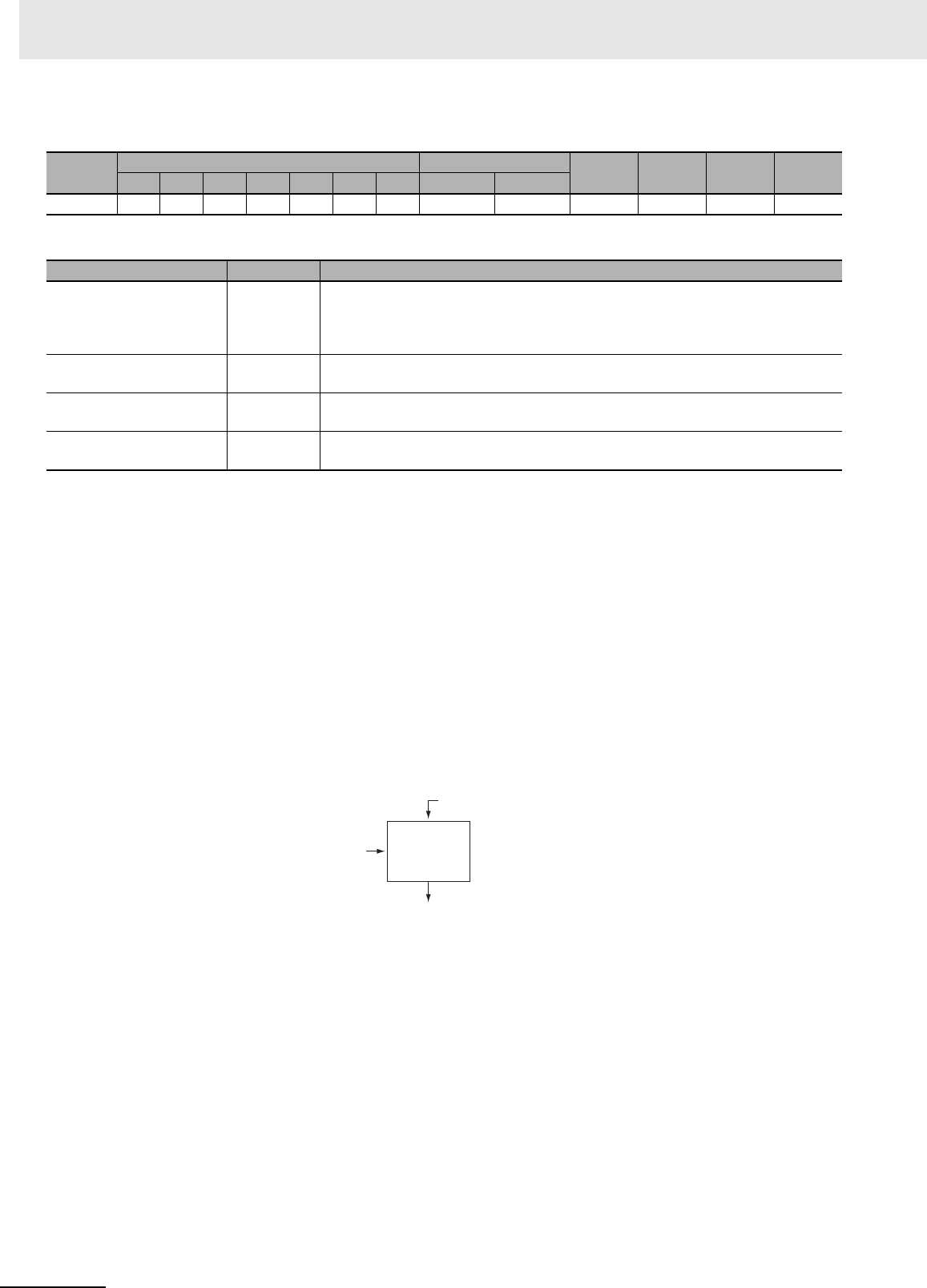
2 Instructions
2-258
CP1E CPU Unit Instructions Reference Manual(W483)
Operand Specifications
Flags
Function
When the execution condition is ON, PIDAT(191) carries out target value filtered PID control with two
degrees of freedom according to the parameters designated by C (set value, PID constant, etc.). It
takes the specified input range of binary data from the contents of input word S and carries out the PID
action according to the parameters that are set. The result is then stored as the manipulated variable in
output word D.
The parameter settings are read when the execution condition turns from OFF to ON, and the Error
Flag will turn ON if the settings are outside of the permissible range.
If the settings are within the permissible range, PID processing will be executed using the initial values.
Bumpless operation is not performed at this time. It will be used for manipulated variables in subse-
quent PID processing execution. (Bumpless operation is processing that gradually and continuously
changes the manipulated variable in order to avoid the adverse effects of sudden changes.)
When the execution condition turns ON, the PV for the specified sampling period is entered and pro-
cessing is performed.
Autotuning
The status of the AT Command Bit (bit 15 of C+9) is checked every cycle. If this control bit is turned ON
in a given cycle, PIDAT(191) will begin autotuning the PID constants. (The changes in the SV will not be
reflected while autotuning is being performed.)
The limit-cycle method is used for autotuning. PIDAT(191) forcibly changes the manipulated variable
(max. manipulated variable ↔ min. manipulated variable) and monitors the characteristics of the con-
trolled system. The PID constants are calculated based on the characteristics that were observed, and
the new P, I, and D constants are stored automatically in C+1, C+2, and C+3. At this point, the AT Com-
mand Bit (bit 15 of C+9) is turned OFF and PID control resumes with the new PID constants in C+1,
C+2, and C+3.
• If the AT Command Bit is ON when PIDAT(191) execution begins, autotuning will be performed first
and then PID control will start with the calculated PID constants.
• If the AT Command Bit is turned ON during PIDAT(191) execution, PIDAT(191) interrupts the PID
control being performed with the user-set PID constants, performs autotuning, and then resumes PID
control with the calculated PID constants.
Area
Word addresses Indirect DM addresses
Constants CF Pulse bits TR bits
CIO WR HR AR T C DM @DM *DM
S, C, D OKOKOKOKOKOKOK OK OK --- --- --- ---
Name Label Operation
Error Flag P_ER • ON if the C data is out of range.
• ON if the actual sampling period is more than twice the designated sampling period.
• ON if an error occurred during autotuning.
• OFF in all other cases.
Greater Than Flag P_GT • ON if the manipulated variable after the PID action exceeds the upper limit.
• OFF in all other cases.
Less Than Flag P_LT • ON if the manipulated variable after the PID action is below the lower limit.
• OFF in all other cases.
Carry Flag P_CY • ON while PID control is being executed.
• OFF in all other cases.
Parameters (C to C+8)
Manipulated variable (D)
PV input (S)
PID control


















